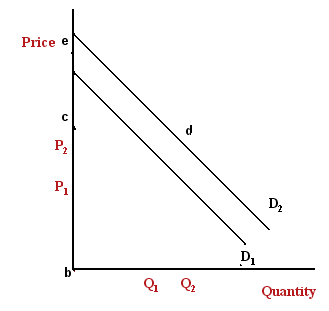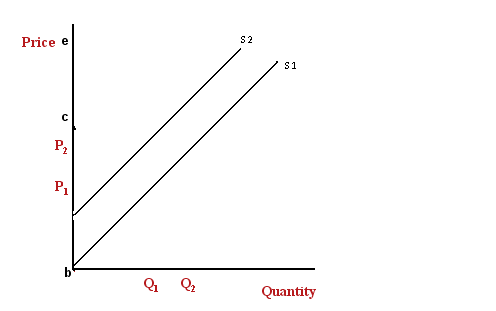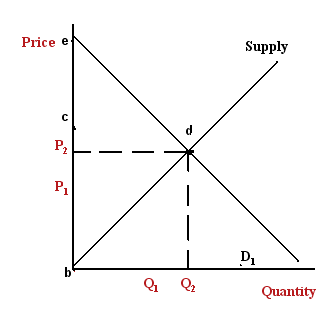Summary
The above article is about the effect that Michelle Obama has had on the fashion industry. The effect relates to the demand for the clothes she wears and the prices of stock for companies that manufacture and sell her favorite fashion items. Between November 2008 and December 2009, Michelle Obama made 189 public appearances across America and Europe (Yermack). In this period she created a $ 2.7 billion return for companies that sell her favorite fashion (Yermack). This return is considered to be abnormal since it is not caused by market variations that prevail under normal circumstances (Yermack). According to the article, the Michelle Obama effect can be explained as redistribution of value (Yermack). This means that the stock for companies selling the fashion she likes gains value while those selling the fashion she does not like lose value (Yermack). The companies associated with her favorite fashion gained up to 2.3% in stock value while those that do not sell her best fashion lost about 0.4 of their value (Yermack).
The Obama effect was found to be consistent over time (Yermack). The effect she has had in the fashion industry is greater than those attributed to celebrities. In 18 appearances, she created a return of 2.3% as compared to 0.5% which is the average return associated with celebrities (Yermack). When she visited Europe, the stock for companies dealing in her favorite fashion items had a gain of 16.3%. This was much greater than the S+P 500’s that gained only 6.1% in the same time frame (Yermack). The Obama effect has been driven by internet technology that facilitates the quick sharing of information on fashion as well as the instant purchase of new fashion items (Yermack).
Explanation
The Michelle Obama effect destabilized the equilibrium for the stock and fashion market, especially in the short term. This is because it directly influences the market forces such as demand and supply. The changes in the market are as follows. To begin with, it is important to analyze the effect on the demand for the stock associated with Michelle’s wardrobe. Demand refers to the total amount of goods and services that customers are willing and are able to buy in a given market (Lehman and Png). According to the above article, a dress is usually declared a new fashion as soon as Michelle is seen wearing it. This means that more women will immediately express their willingness to buy the new fashion that is associated with Michelle. Since they are determined to be fashionable, the women will find means of raising the required funds to buy the dress in fashion. This means that they will be able to buy the dress at the prevailing prices.
The stock for the companies associated with the new fashion items also becomes more attractive to investors. The investors will thus express their willingness to purchase such stock and also raise the needed funds to acquire the stocks. The increase in demand explains the rise in the prices of the stocks (Lehman and Png). In the short term, the market will experience an increase in demand for the stock and the new fashion items (Lehman and Png). The change in demand is illustrated in figure 1.
Supply is the second aspect of the market that will be affected by the Michelle Obama effect. Supply refers to the number of goods and services that sellers are willing and are able to offer in the market (Lehman and Png). In this case, supply will be analyzed in the short term as well as in the long term. In the short term, the supply will remain static or will not change immediately, especially in the fashion market. This is attributed to two main factors. First, the manufacturers are not in a position to predict whether the new fashion items will become Michelle’s favorite or not. This means that the quantities of the new fashion products will initially be informed by the general demand level. The manufacturers thus will not take into consideration the high demand associated with Obama’s effect in the short term. Secondly, the effect comes as a surprise demand to the manufacturers. This means that they are not prepared to expand their production capacities to accommodate the sharp increase in demand for their products. Thus, in the short term, the supply will be less than the demand and this leads to higher prices (Lehman and Png).
In the long term, the manufacturers are able to adjust their production capacities in response to the high demand for their products (Lehman and Png). This is because they have enough time to acquire the necessary capital to enable them to increase their production (Lehman and Png). This can be in the form of short-term loans from commercial banks or additional staff to assist with the various aspects of production. The retailers on the other hand will have enough time to source the new fashion items and make them available to the customers at their shops (Lehman and Png). They can also use this time to acquire additional capital through credit facilities to increase the stock of the new fashion items. Thus, in the long term, the supply can match or even exceed the demand. The change in supply is illustrated in figure 2.
The market operates at an optimal level when it is in equilibrium (Lehman and Png). Market equilibrium refers to the situation in which demand for particular goods or services in the market is equal to their supply (Lehman and Png). In this case, the market will be in equilibrium when the demand for the stock and the new fashion items is equal to their supply. In the short term, the demand for the new fashion items and stock will be more than their supply in the market. The supply for the new fashion items, in particular, will be less than their demand due to limitation in output as discussed above. The stock on the other hand will be in short supply since all investors find them attractive and are thus not willing to sell them. In the long term, the manufacturers are able to adjust their production in response to the new demand for their products. The investors will also sell their stocks to fulfill their liquidity needs. Consequently, the supply will be adjusted to match the demand (Lehman and Png).
However, adjusting the supply to match the demand does not automatically lead to market equilibrium. This is because the demand is never static and keeps changing (Lehman and Png). In most cases, especially in the fashion industry, the demand tends to decline in the long term. This is due to consumer behavior associated with a change in taste and preferences (Lehman and Png). In the context of the fashion industry, the demand for new fashion items might reduce if the retailers increase the prices of the products beyond consumers’ expectations. This happens mainly in the short term (Lehman and Png). In the long term, the supply will be increased. However, it might fail to match the demand which usually reduces in the long term as the fashion loses its value.
From the above analysis of supply and demand; it is apparent that market equilibrium cannot occur either in the short-term or in the long term. The supply and demand forces will continue to interact in the market until they match or become equal (Lehman and Png). The point at which the demand for the new fashion items and stock matches their supply forms the market equilibrium (Lehman and Png). This is illustrated in figure 3. The market equilibrium is never static and will continue to change with the changes in the demand and supply of products.
Changes in the Demand
Figure 1 below shows the demand curve for the fashion items. Price is on the vertical axis while the horizontal axis is for quantity.
Causes
The change in demand is caused by the Michelle Obama effect. As more women learn about the new fashion, they will express their willingness to buy them. This leads to an increase in demand.
Effect
The level of demand before the Michelle Obama effect is reflected by the lower demand curve (D 1). However, the effect causes an increase in demand for the new fashion items. Thus, the demand curve shifts upward to the right to reflect the new demand level. The new demand curve will thus be D 2. The figure also shows that greater quantities are demanded at lower prices.

Change in supply

Figure 2 shows the supply curve for fashion items. Price is on the vertical axis while quantity is on the horizontal axis.
Cause
The change in supply is caused by the increase in the demand for the new fashion items. The increase in demand is caused by the Michelle Obama effect as discussed above. Thus, in response to the high demand, the supply also increases. This means that the manufacturers will produce more quantities of the new fashion items so that all customers are able to find and purchase the items. The increase in supply is illustrated by the shift of the supply curve from S1 to S2.
Effects
In the short term, the companies that manufacture the new fashion items cannot increase their output in response to the high demand. Thus, the lower supply curve (S1) will reflect the level of supply in the short term. However, in the long term, the companies are able to acquire more capital and adjust their production in response to the high demand. As the supply of the new fashion items increases, the supply curve shifts upward to the left. Thus, the level of supply in the long term is reflected by the upper supply curve (S2).
Market equilibrium

Figure 3 above shows the market equilibrium. The vertical axis shows the price while the vertical axis is for quantity.
Causes
The figure shows the relationship between demand and supply. The changes in demand are caused by the customers’ willingness to buy more quantities of the items. The Michelle Obama effect is responsible for the increase in demand. The increase in demand causes the demand curve to shift from D1 to D2 as shown in figure 1. When the demand rises, the supply of the fashion items must be increased so that all customers are able to find and purchase the items. This then causes a change in the supply curve. To illustrate the change in supply, the supply curve will shift from S1 to S2 as shown in figure 2. The supply curve and the demand curve will continue to shift until the quantities supplied by the sellers are equal to those demanded by the buyers.
Effects
When the quantities supplied are equal to the quantities demanded, then the market is said to be in equilibrium. The equilibrium is represented by the point at which the demand curve intersects the supply curve as shown above. In figure 3, the equilibrium is at the point marked d. At the point of equilibrium, the optimal price level will be P2 while the optimal level of supply will be Q 2. This is the optimal level at which the market should operate.
Bibliography
Lehman, Dale and Ivan Png. Managerial economics. London: Wiley-Blackwell, 2007.Print.
Yermack, David, “The Michelle Obama effect.” Harvard Business Review: 2010.Web.